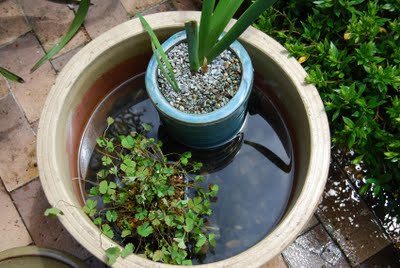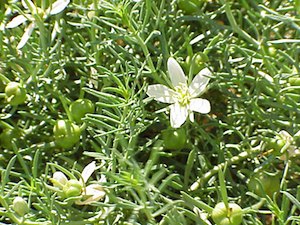 |
| Breeding ground: In the fight against the Aedes mosquito, it is key to remove standing water from all areas around your house and garden. |
The enemy is at large and hidden among us. It is attacking us from all sides. It's time to take charge of the situation and take our grounds back!
Track down your enemy!
Watch out for a 2-3 mm black mosquito with white stripes on its legs and body called Aedes, which has, unfortunately, lived up to the literal meaning of its name: "unpleasant."
It targets children and adults equally. Its modus operandi includes biting an infected person and then biting another person to spread the sometimes deadly
dengue fever virus. Our enemy lives among us in cities and villages in empty pots and discarded containers that hold standing water, and of course water storage tanks, and it has breeding habits different than the mosquito that carries malaria.
We have lost our men, women and children in this war. It's time to declare war against the mosquitoes.
Chose your weapons!
Let's face it. Our enemy is almost invisible and its coming from directions unknown. We can not predict where its going to attack next. It can be us, it can be someone we love.
We have two choices. We can use chemical warfare. It will surely kill the enemy, but it will also have some side effects. On the other hand, we can use much safer weapons that will only kill the enemy and protect us without any loss.
Organic Pakistan (a center for agriculture and urban farming) has developed a plan of action using tested and trusted natural control and cure methods that will always work if done properly. The best part is that there are no side effects and the plan is cost effective too!
Mosquito-free homes and workplaces are absolutely essential. Here are a few things you can do to make that happen:
Double your guard
Introduce mosquito-repelling plants around you. Plant rosemary, mint, lemon grass, catnip and marigold in your garden, containers, hanging baskets or window boxes. Mint and marigold are easily available in most nurseries.
Attack on their ground
Do not let water stand in trays under pots and clean your birdbaths once a week.
Make them run for their lives
Mint works like magic to repel insects and has been used as a mosquito repellent for centuries. Hang or place dried mint leaves in a sachet around the house or near windows.
Make your own mint mosquito repellent by taking a few fresh sprigs of mint and fresh citrus peelings and adding boiling water to the mix. Let it sit over night. Strain and add an equal amount of rubbing alcohol. There you have it! Mix it well and use it on your body to repel mosquitoes where ever you go.
 |
| Hermal, also known as "wild rue", is a thicket-like herb that has many medicinal properties. |
A liquid mixture of five (5) parts rubbing alcohol mixed with one (1) part mint oil can also be used as mosquito repellent. Essential oils of lemon grass and garlic are also highly effective mosquito repellents.
Smoke them out by using hermal-seed smoke to fumigate your rooms daily.
Heal yourself
The good news is that 80% of infected people have minor symptoms, such as high fever, and only 5% will have severe conditions, while a small number will face life-threatening complications. People suffering from conditions such as diabetes and asthma have more chances of suffering from life-threatening dengue fever.
If you suffer from high fever, muscle and joint pain, headaches, pain behind the eyes, nausea and vomiting, you must visit your doctor and follow professional treatment.
Remember, healing doesn't have to be a series of torturous events. These simple and healthy drinks should be part of your treatment plan: i) the juice of a half lemon squeezed into a glassful of fresh apple juice should be taken thrice daily to fight dengue fever; and ii) select your favorite from, or a combination of, grapefruit, guava, bell pepper, tomato and lemon or lime juices to strengthen your immune system.
Make your own herbal tea to recover from dengue fever
Mix one cup each of fresh lemon, ginger and garlic juice and add one cup of apple cider vinegar to it. Bring this mixture to a boil and let it simmer until you are left with three (3) cups. Turn off the heat and let it cool. Once it's cold, add four (4) cups of any honey (preferably acacia honey) and combine the mixture. Use an airtight container to store it in the refrigerator.
It's recommended to put two tablespoons of the mixture in a glass of water and drink it daily on an empty stomach.
Remember, the best strategy in any war is to never let down your guard. Your enemy might have the advantage of a surprise attack, but you can be prepared to eventually reverse the situation in your favour. Follow our action plan and buttress your defences. Everything you need to protect yourself is in your home, or close at hand.
published at Newsline Magazine on 20th September,2011 http://www.newslinemagazine.com/category/lifestyle/home/























